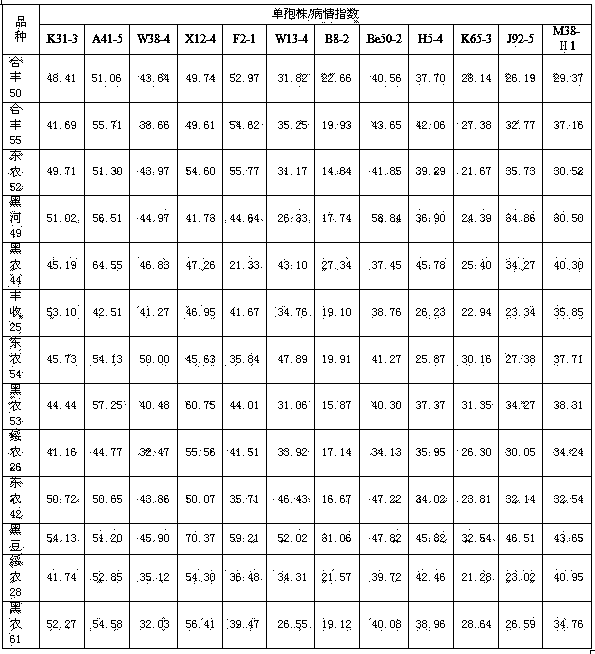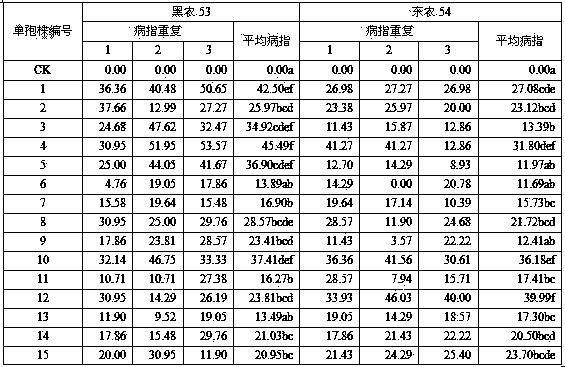Fusarium oxysporum single spore isolation method for soybean root rot
A technology for soybean root rot and Fusarium oxysporum, applied in the field of fungal monospore strain separation, can solve the problems of small Fusarium oxysporum conidia, low probability of monospore strain, poor separation effect, etc., and achieves simple equipment and high accuracy , fast effect
- Summary
- Abstract
- Description
- Claims
- Application Information
AI Technical Summary
Problems solved by technology
Method used
Image
Examples
Embodiment 1
[0027] Embodiment 1, the mensuration of the pathogenicity of soybean Fusarium oxysporum monospore strain
[0028] The bacterial strain used in this embodiment is Fusarium oxysporum (Xing An, Wen Jingzhi, Lu Guozhong, Sun Xiaodong. Isolation and identification of Fusarium on soybean root rot diseased strains in Heilongjiang Province, Journal of Northeast Agricultural University, 2009, 40 (8) : 5-9; Wang Jiansheng, Wang Jiamei, Li Xiao, Dong Shameng, Zhang Zhengguang, Zheng Xiaobo. Rapid molecular detection of Fusarium oxysporum. Acta Phytopathology, 2013, 43( 3): 318-322 ), using the above method to isolate single-spore strains of the same Fusarium oxysporum, and obtain 15 single-spore strains, and then isolate the second-generation single-spore strain of No. 12 single-spore strain to obtain 15 second-generation single-spore strains. The soybean varieties used in this embodiment are Heinong 53 and Dongnong 54 purchased from the market.
[0029] The experimental method is as fo...
Embodiment 2
[0050] Embodiment 2, the measurement of different soybean varieties to Fusarium oxysporum disease resistance
[0051] The 14 soybean varieties used in this example are commonly used varieties in production, and the pathogenic bacteria are Fusarium oxysporum monospores isolated from different Fusarium oxysporum (randomly selected soybean root rot pathogen Fusarium oxysporum).
[0052] Use 12 randomly selected Fusarium oxysporum strains to isolate single spores according to the above method, then interact with 14 soybean varieties, and measure the disease resistance of 14 soybean varieties according to the method described in Example 1.
[0053] The experimental results are shown in Table 3.
[0054] Table 3 Resistance performance of different varieties to Fusarium oxysporum strains
[0055]
[0056] As can be seen from Table 3, the results of the interaction between 12 randomly selected single-spore strains of Fusarium oxysporum and 13 varieties showed that there were signi...
PUM
 Login to View More
Login to View More Abstract
Description
Claims
Application Information
 Login to View More
Login to View More - R&D
- Intellectual Property
- Life Sciences
- Materials
- Tech Scout
- Unparalleled Data Quality
- Higher Quality Content
- 60% Fewer Hallucinations
Browse by: Latest US Patents, China's latest patents, Technical Efficacy Thesaurus, Application Domain, Technology Topic, Popular Technical Reports.
© 2025 PatSnap. All rights reserved.Legal|Privacy policy|Modern Slavery Act Transparency Statement|Sitemap|About US| Contact US: help@patsnap.com



